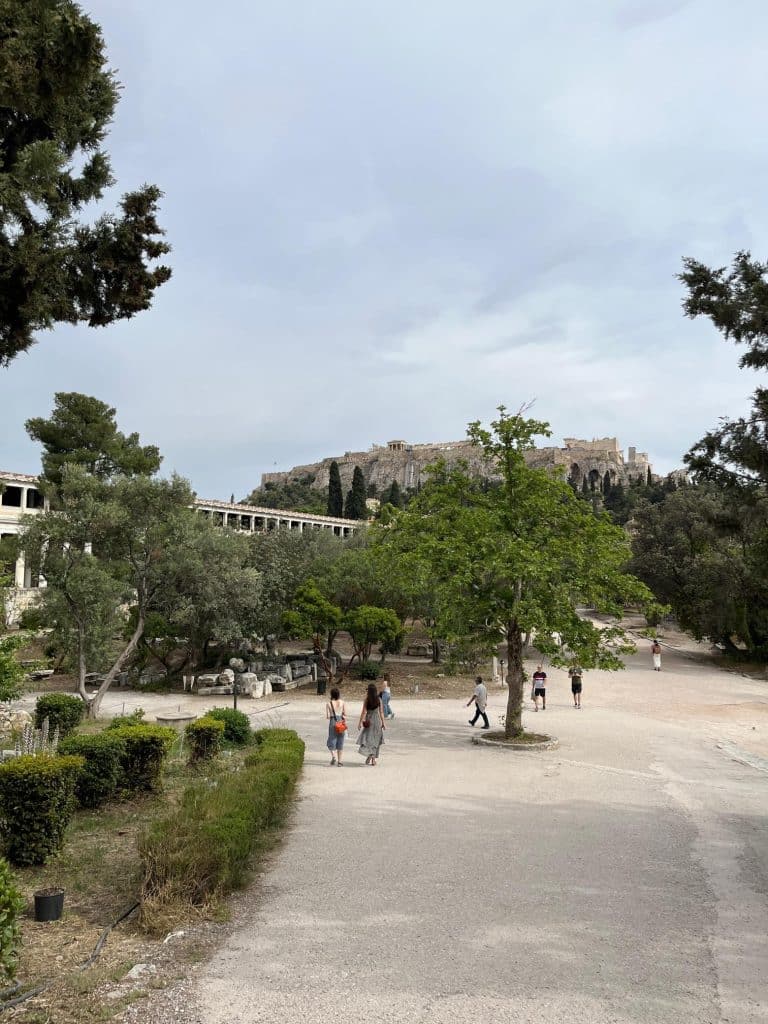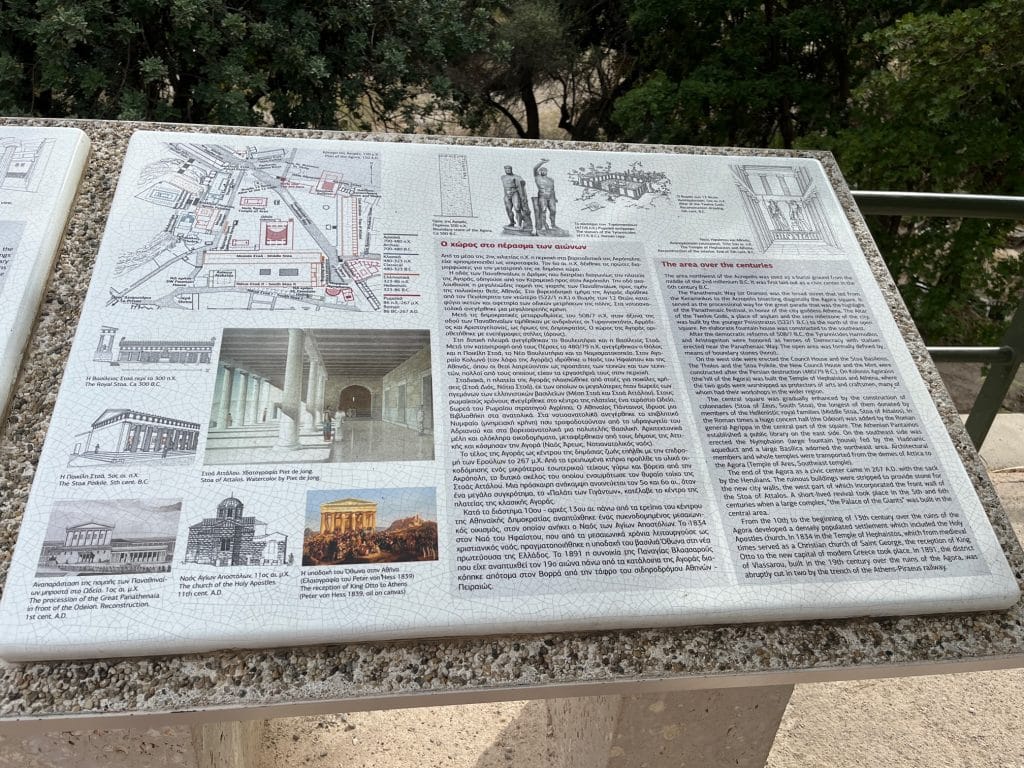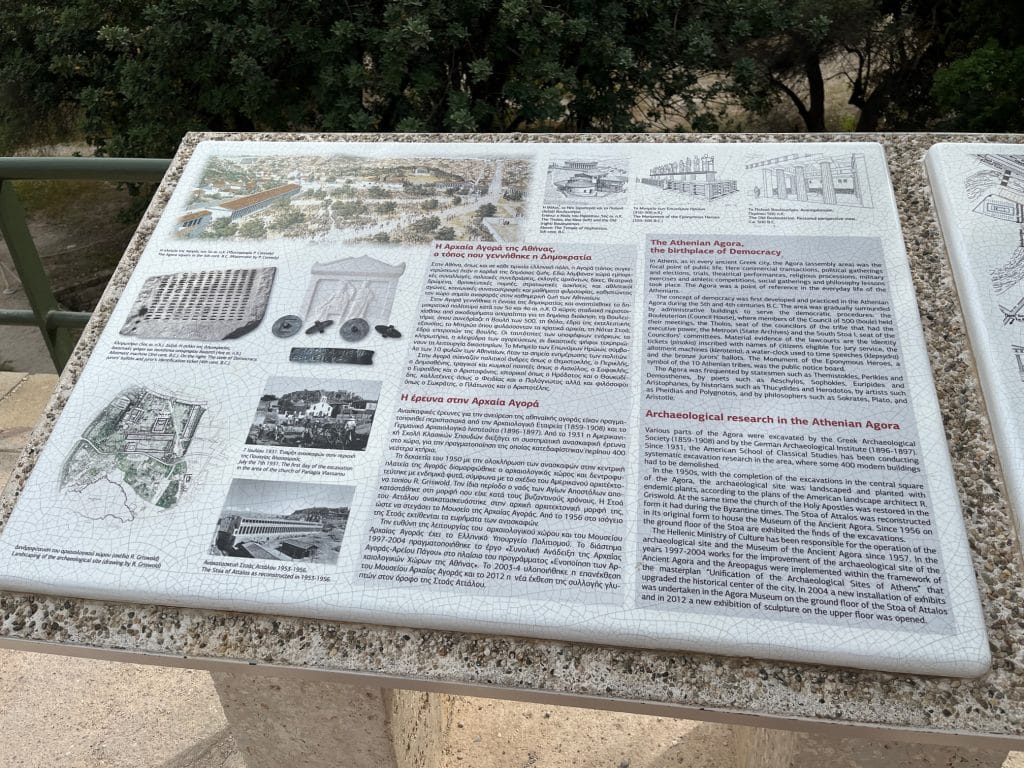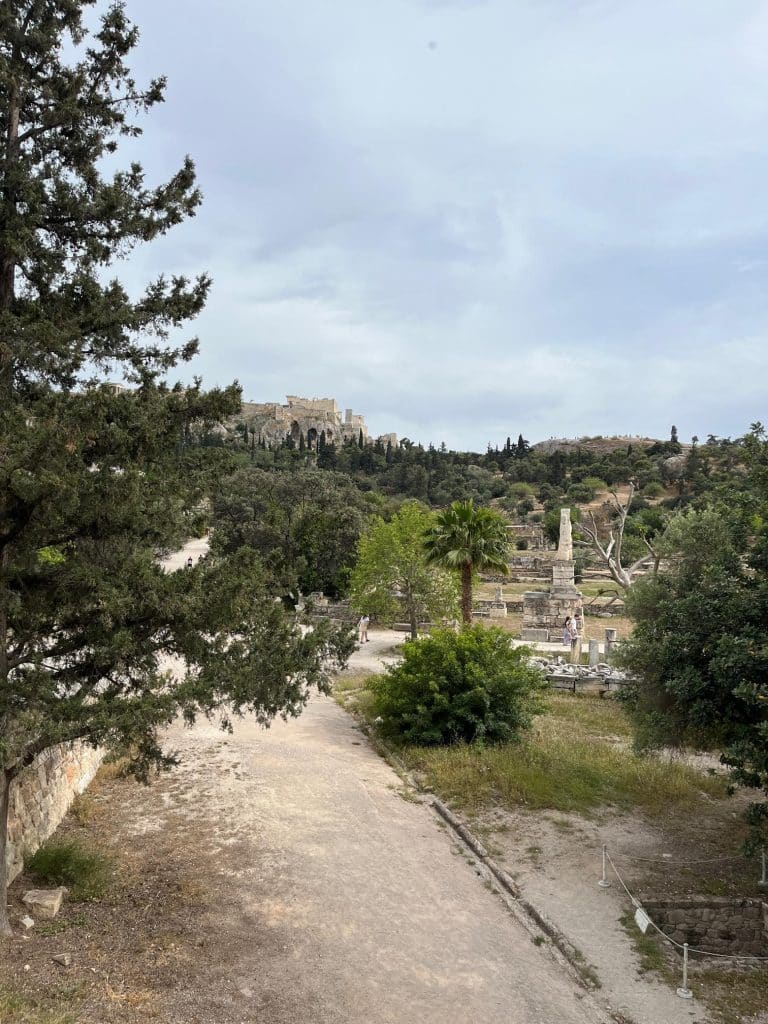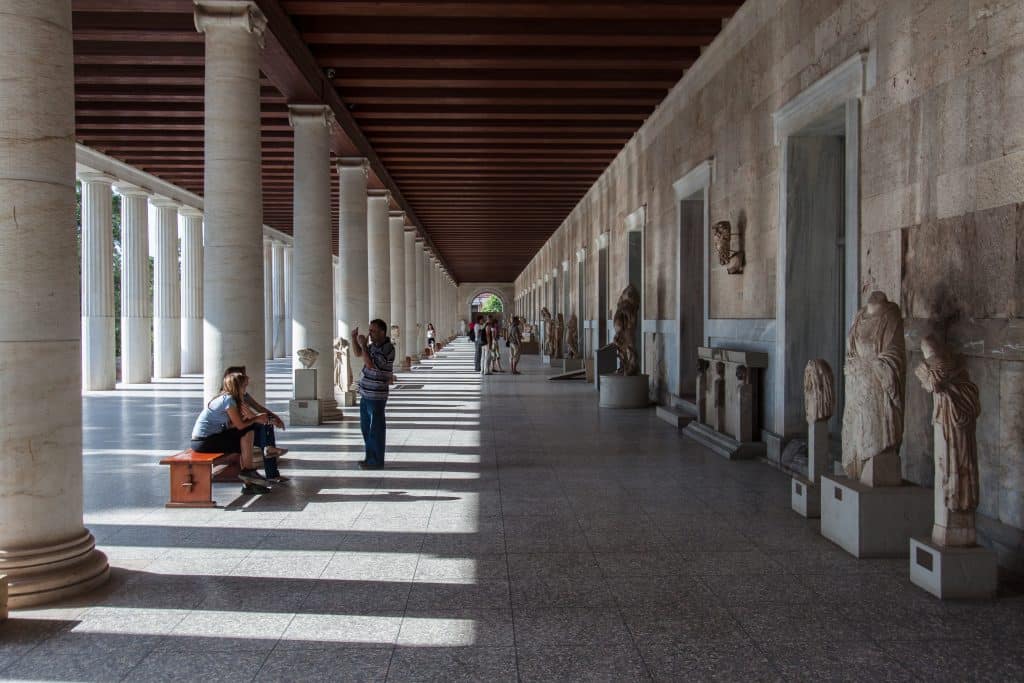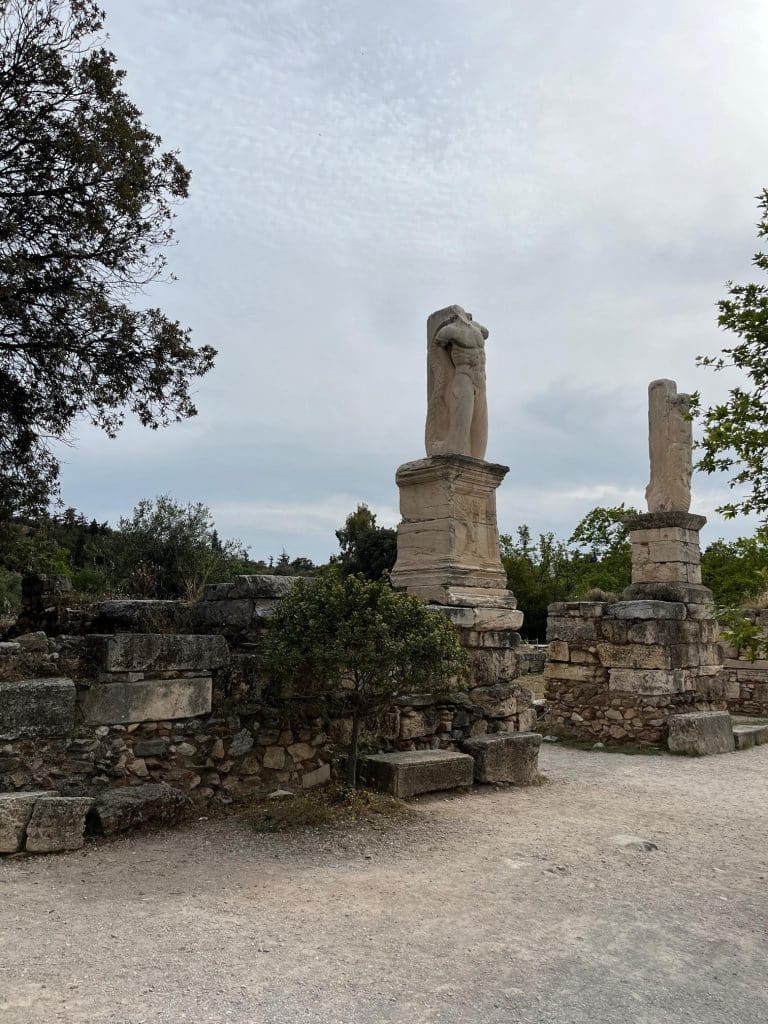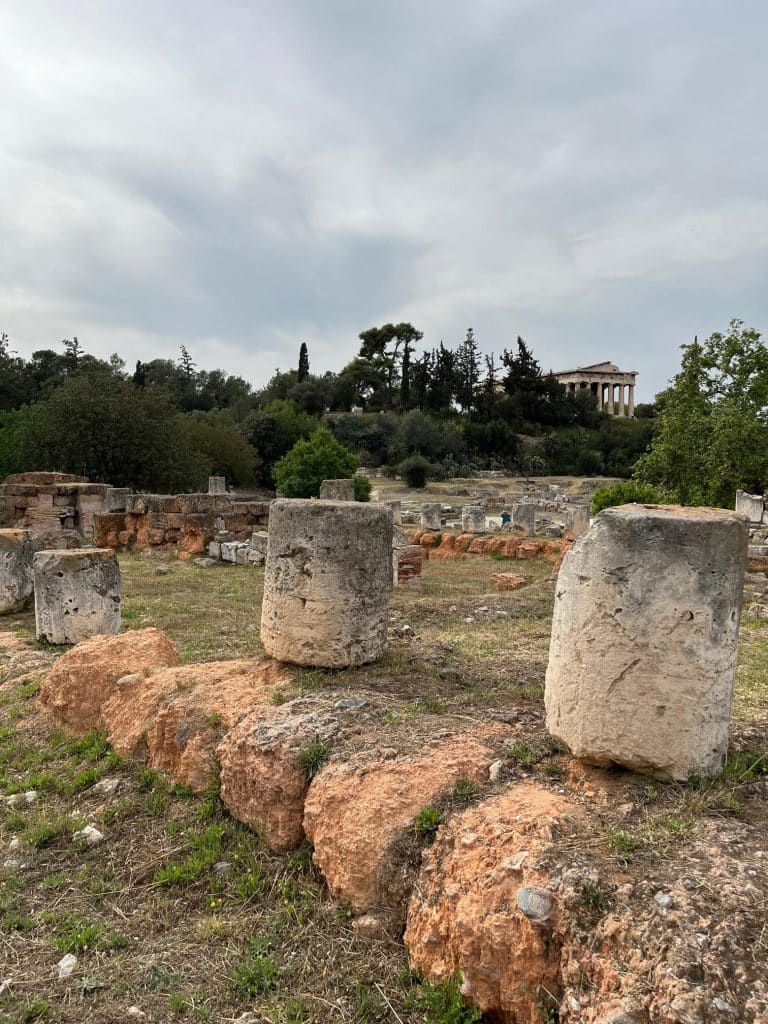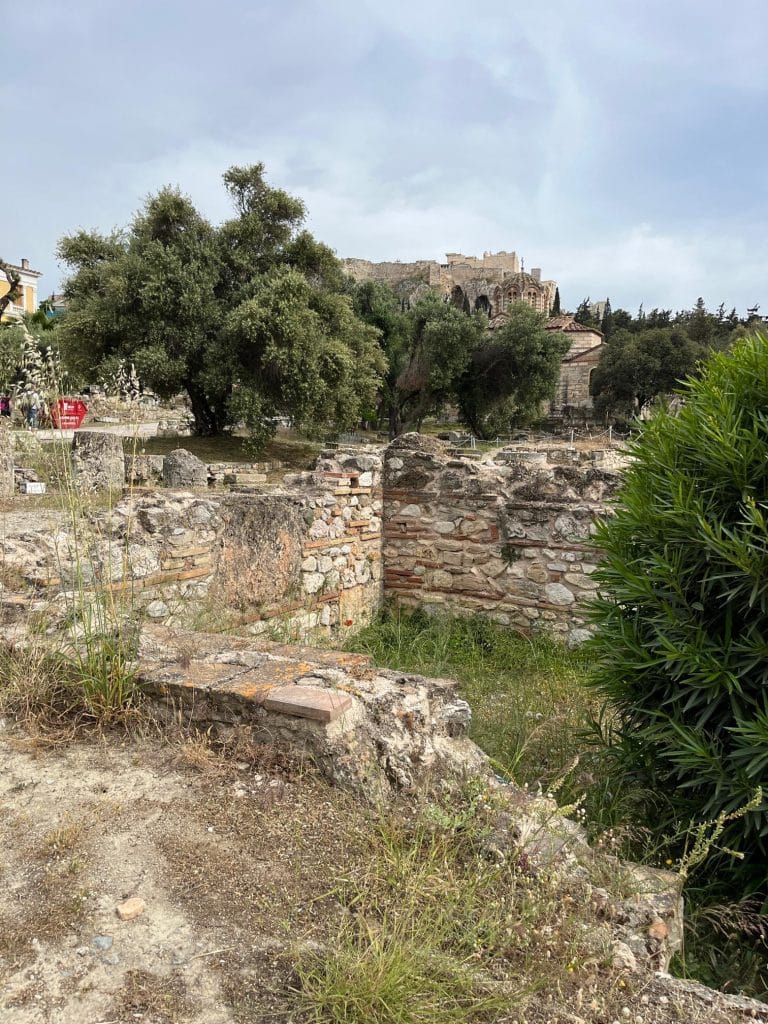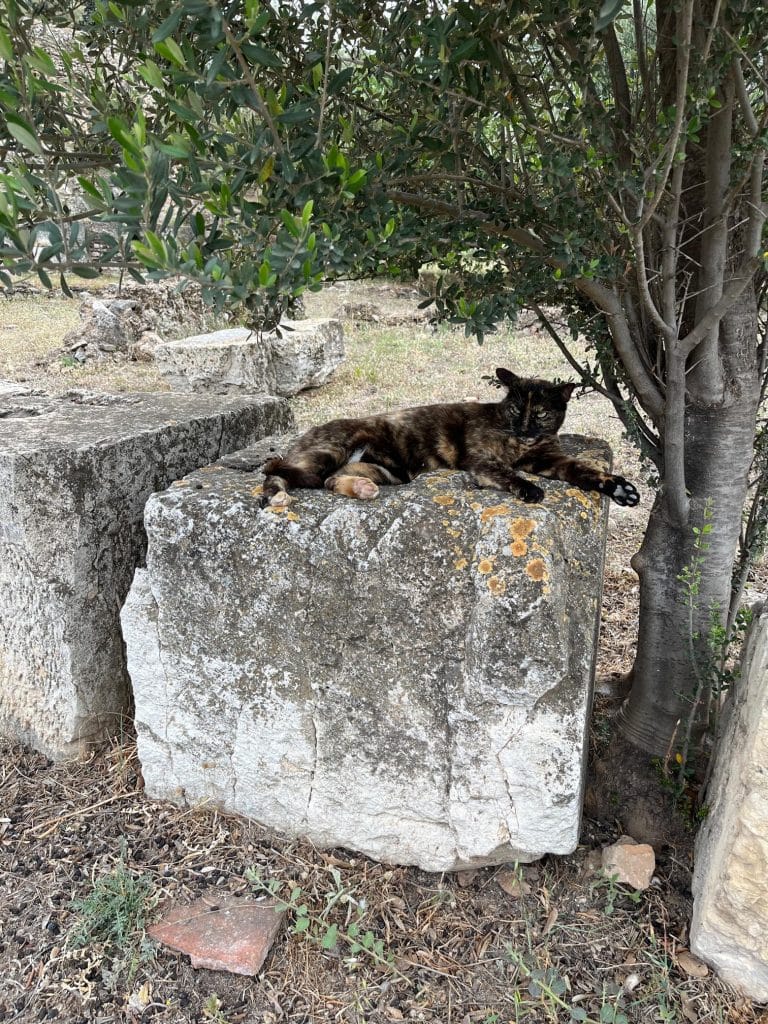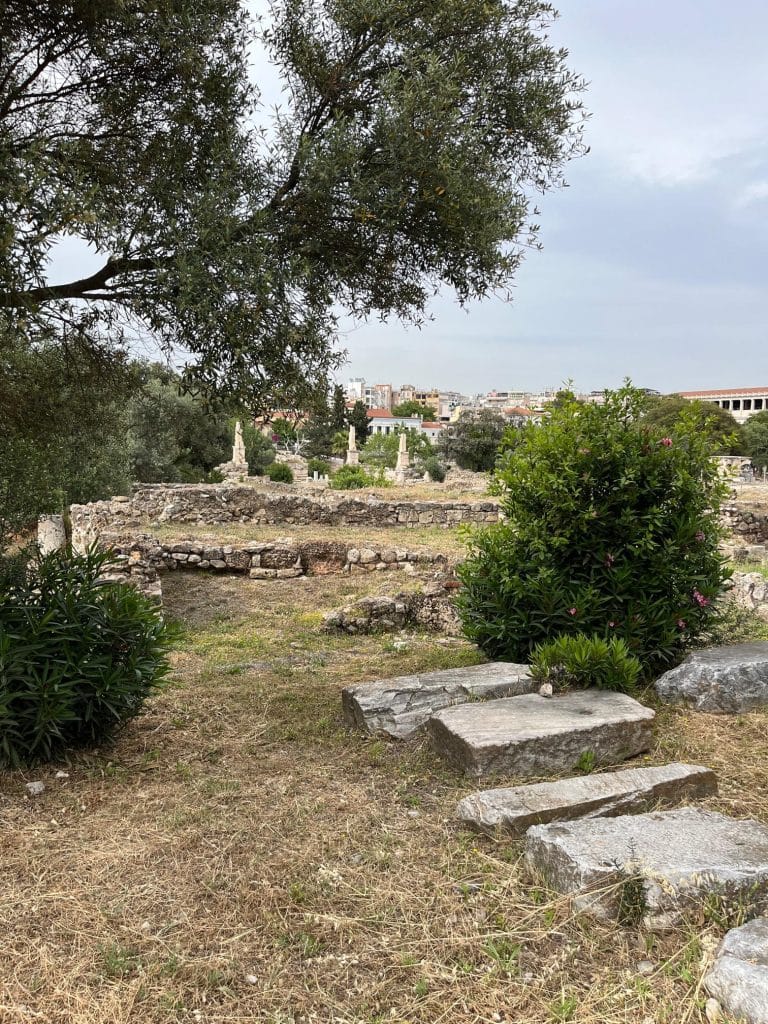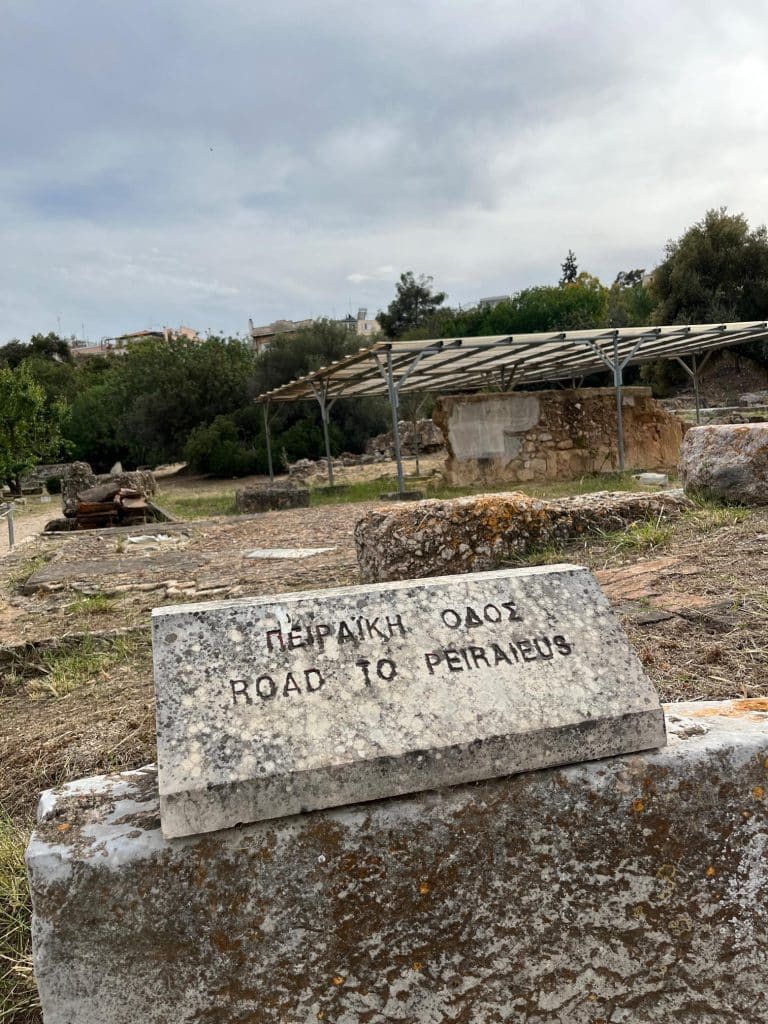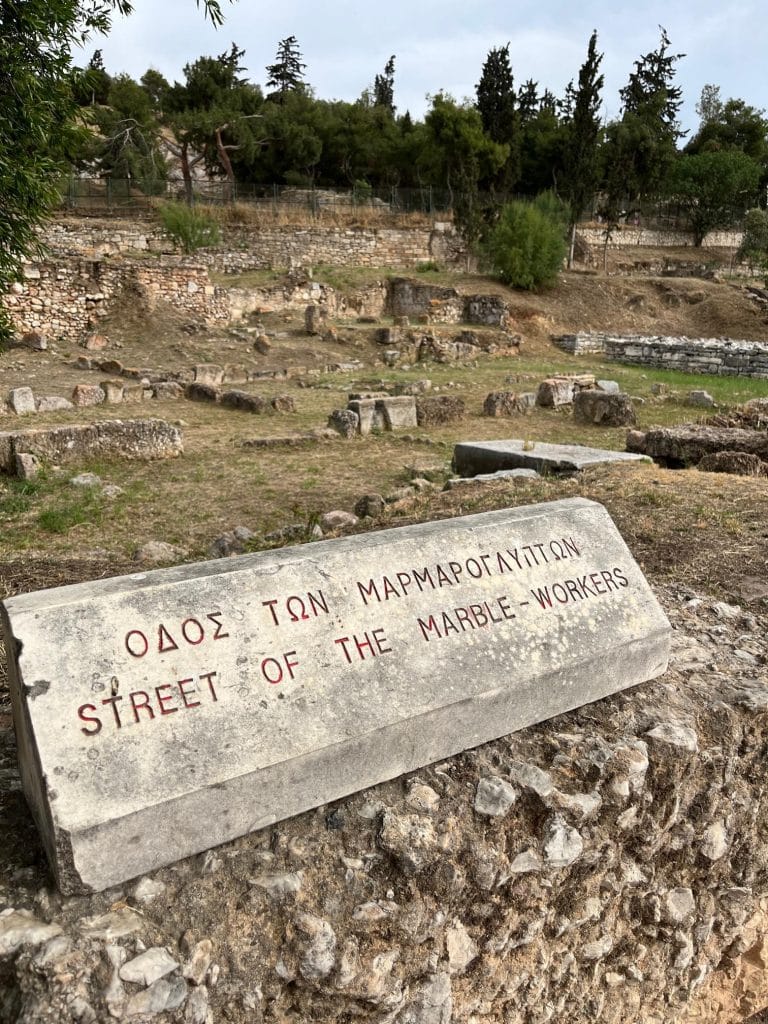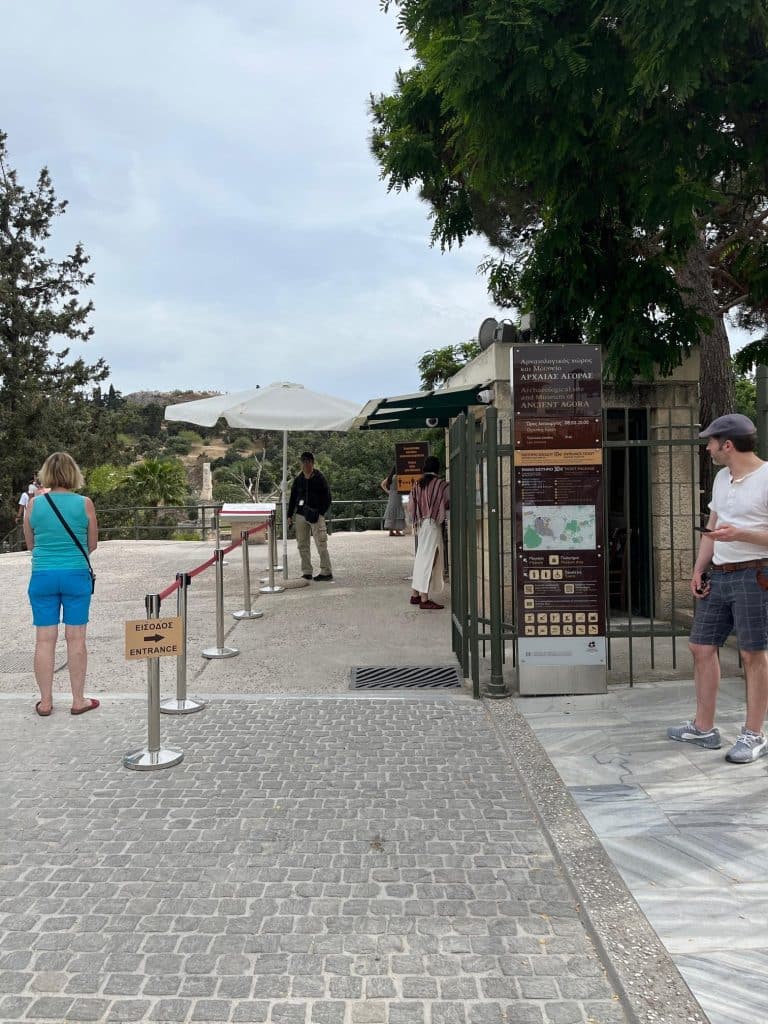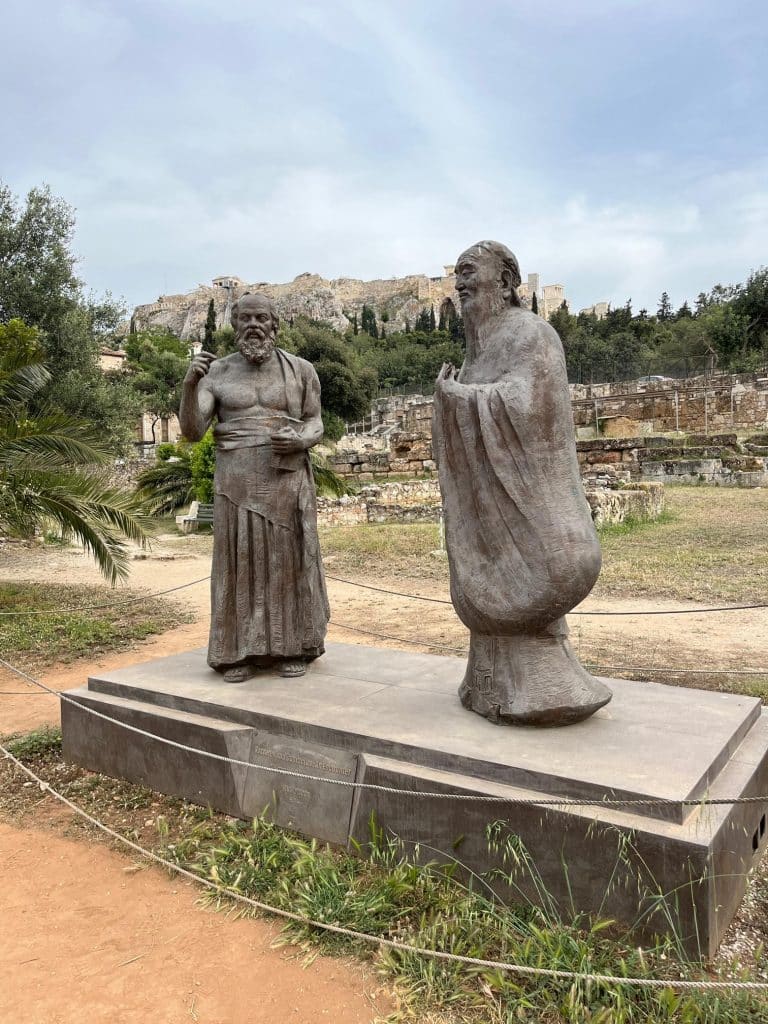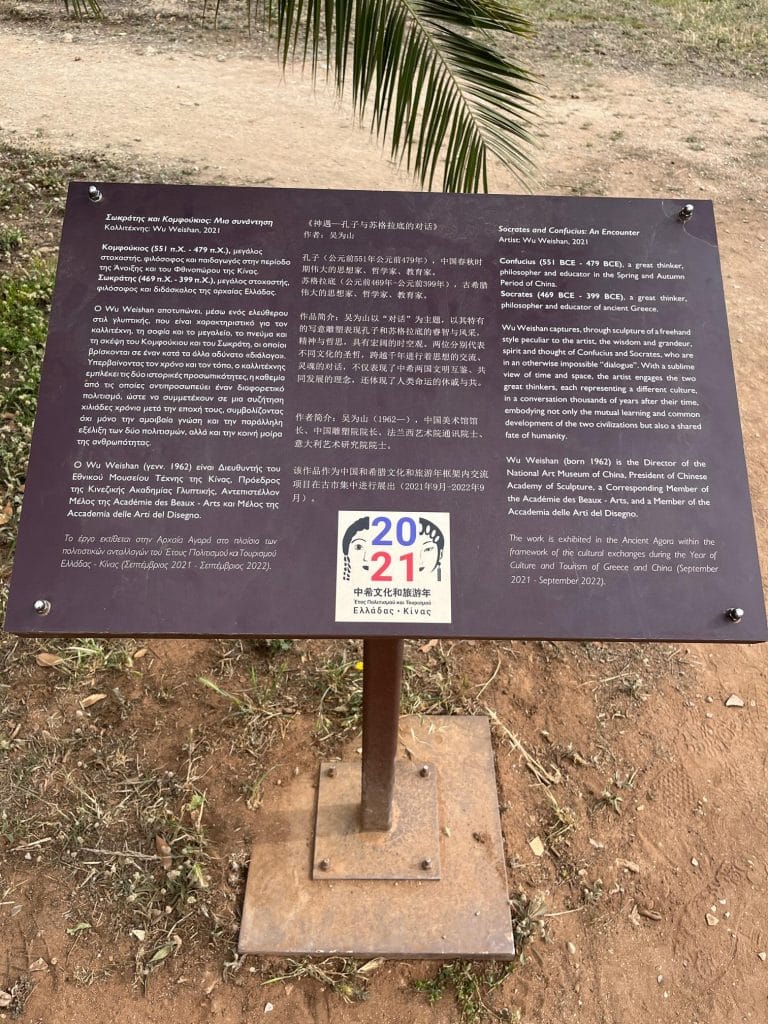Sites Along the Ancient Agora of Athens: What You’ll Encounter
Imagine a bustling city center, where the community gathers for shopping, or to catch a movie at an outdoor amphitheater, food trucks, homeschooled kids on field trips; educators pointing out the various botanical treasures at their feet. This scene is what the Ancient Agora of Athens may have looked like during 6th-century Greece. Just three kilometers southeast of the Acropolis of Athens are numerous sites along the Ancient Agora of Athens dotted along the Panathenaic Way, each step a portal to the past.
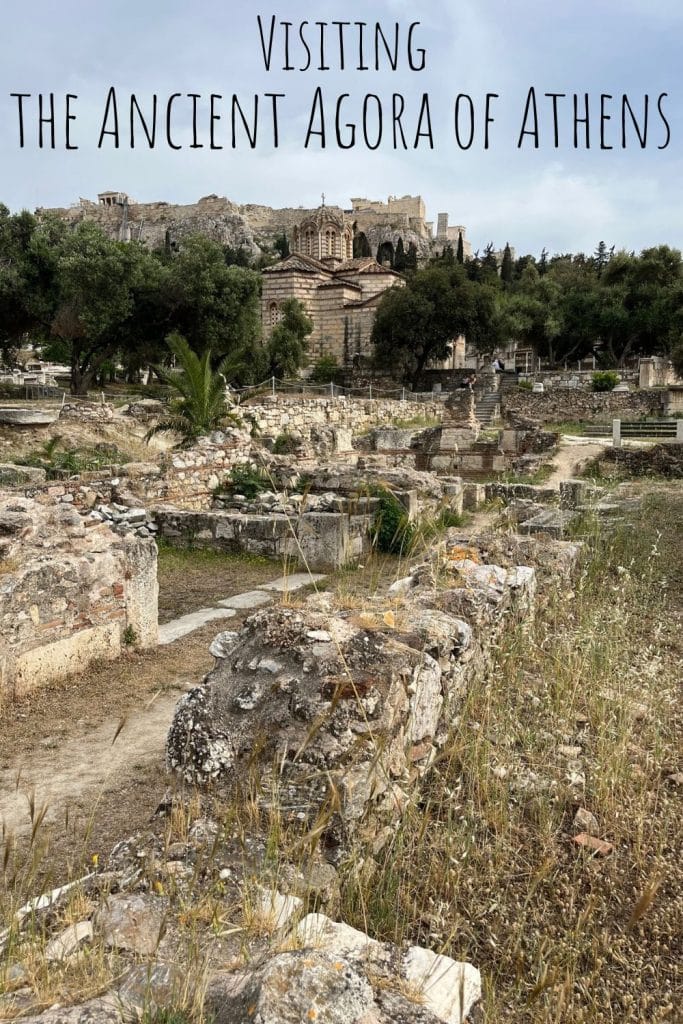
I stumbled on the Ancient Agora while just wandering around central Athens. I had dealt with the ridiculous crowds at the Acropolis and the bustle of Monastiraki with increasing irritation, so finding a relatively quiet place to explore was a welcome respite. The Agora was relatively empty when I visited, which seemed crazy since it was surrounded by the busiest places in the city, but it was a relief to be able to leisurely wander the paths without the loud jostle of Athens, especially since I had just come from the gorgeous mountain quiet of Arcadia. With the Acropolis rising behind and the cafes of Monastiraki in front, visiting the Ancient Agora of Athens is both convenient and one of my recommended must-dos.
The Panathenaic Way: The Road to Acropolis
Upon arrival at the Ancient Agora of Athens; agora meaning “gathering place” the Panathenaic Way rises up to greet visitors. It is here where you’ll encounter remarkable ruins along the Ancient Agora of Athens. This path historically wound its way to the Acropolis; named for the Panathanea; a days-long Greek festival and celebration in honor of the goddess Athena. This was the “parade route” or pathway the procession would follow, likely also used to celebrate the Panathenaic Games; similar to the Olympic Games. Well, similar games honoring separate deities.
The Stoa of Attalos and Middle Stoa
First off, what is a stoa? A stoa is simply a “temple, or covered walkway for public use.” And, one of the first sites along the Ancient Agora is the Stoa of Attalos–named for King Attalos II–which is now a reconstructed museum and visitor center. A business and conference center is on the second floor. This building by today’s standards is a strip mall of sorts. Built on two levels– the first, supported by doric columns along its length, and the second, ionic. Across the Panathenaic Way, the Middle Stoa, was built in 180 BC. It is set in the center of the Agora of Athens and marked by a marble Corinthian. The Middle Stoa housed additional shops and offices.
Additional Sites along The Panatheniac Way
Ahead along the path is the round government building, the Tholos, built in approximately 465 BC. Beyond that lies the marble Temple of Hephaestus. Hephaestus was the god of craftsmanship, fire, and metalwork. A statue depicting Roman Emperor Hadrian (120 AD) also sits along this pathway. Only the statue’s torso remains today. Up ahead you’ll find the Odeon of Agrippa, an ancient theater from 15 BC, flanked by three guardian statues. And don’t forget to step into the Byzantine Church of the Holy Apostles for stunning views. Within the Ancient Agora, the church is the only fully intact structure.
Archaeological History of the Sites Along the Ancient Agora of Athens
A result of the expansion of train travel and the installation of train tracks led to the discovery of some artifacts throughout the agora. As a result, buildings that sat atop it were demolished to unearth more of the ancient ruins. The Ancient Agora Museum, within the Stoa of Attalos, was built in 1957 and items from the excavations are housed within it.
General Timeline of the Agora
Between 1600 and 700 BC the agora was a Mycenaean cemetery. Archaeological artifacts indicate graves dating back to the Iron Age. Of course, as mentioned, in the 6th century the agora became a common place for public use. However, by 480 BCE, the agora was burned to the ground during the Greco-Persian Wars. Between the 5th and 4th centuries BCE, rebuilding commences including the Temple of Hephaestus and the Tholos.
The Sack of Athens by the Heruli in 267 AD once again found the agora demolished. It was rebuilt and again demolished between 580 and 590 CE due to the Slavic invasion. Moving into relatively modern times, the agora was once again rebuilt during the Greek city-state. It is then when excavation begins. This continues until the completion of the reconstruction of the Stoa of Attalos in 1956.
Visiting the Ancient Agora of Athens
The site is open from 8 a.m. to 8 p.m. daily. Admission fees range from $5 to $10 USD, though combined tickets are available for approximately $30 USD. Combined tickets can include admission to the following sites:
The Acropolis – the citadel and home to the Parthenon
Theatre of Dionysus – ancient theater built into the hill structures along the Acropolis
Roman Agora – funded by Julius Ceasar and Augustus
Temple of Olympian Zeus – largest ancient temple built
Kerameikos – an Athenian burial ground
Hadrian’s Library – philosophy school and the largest library in Athens
Aristotelian Lyceum – school of philosophy founded by Aristotle
If you’re looking for an all-encompassing tour of Athens, consider a guided tour by Take Walks. Their Best of Athens City Tour is the ideal introduction to the region. This tour allows you to experience the best of Athens in just four hours. Led by a local guide, your small group will get to explore the Parthenon early in the day. This gives you time to experience the area without the significant crowds. You’ll make your way to the sites along the Ancient Agora of Athens. You’ll then end your tour exploring the neighborhood of Plaka.
This Athens City Tour lets you experience the top archeological highlights of the city in a single morning. With a small group and an expert local guide, you’ll explore the Parthenon before most of the crowds show up, see the iconic Temple of Hephaestus in the Ancient Greek Agora, and lose yourself in the winding streets of Plaka. For people who want to take a deep dive into the history of the world’s first democracy, this is a great way to pack a lot of history into a small amount of time.
Getting Around to Visit Sites in Athens
Without a rental car, the best way to get around Athens is going to be via Metro or on foot. Public transportation via Metro lines 1 and 3 leads to significant sites within Athens. The three Urban Rail Transport S.A. lines run periodically depending upon location. Tickets are available via ticket machine or at the tram station office. Train or bus is recommended if visiting from other locations throughout Greece, and for the cruise ship set, Athens attractions are a quick cab or Metro ride away from your disembarkation point; likely the town of Piraeus. Adventurous riders may opt to rent a bike in order to get around Athens. Rentals start at around $13 USD.
As far as when you should visit Athens, most experts will agree that April, May, September, and October are the best months to visit. In the off-season, temperatures are decent and crowds are at a minimum. Hostels, bed and breakfasts, and hotels abound in terms of accommodations in Athens. The options are plentiful, it just depends on the type of experience you seek. And of course, foodies will appreciate all that Greece has to offer. Mediterranean fare is flavorful and healthful; so if you’re a fan of cheese, fresh pastries, fish, and fresh vegetables, you truly can’t go wrong.


